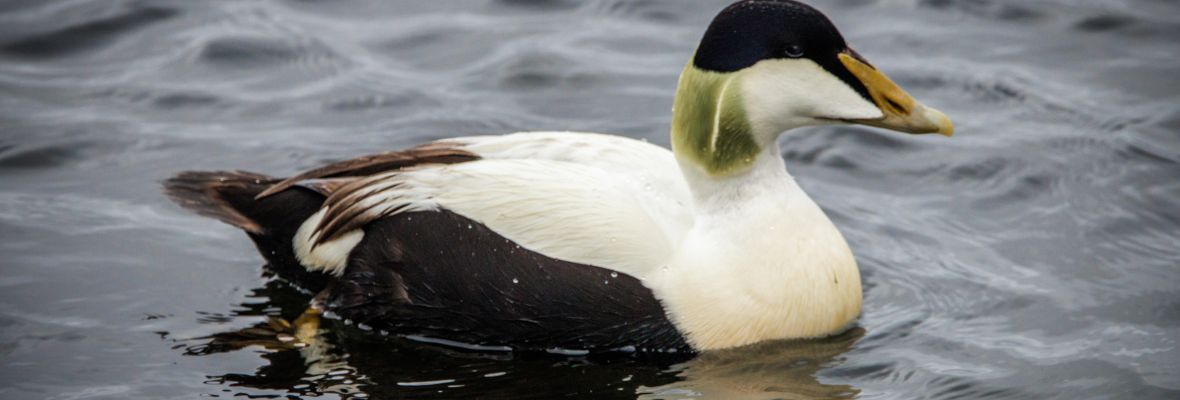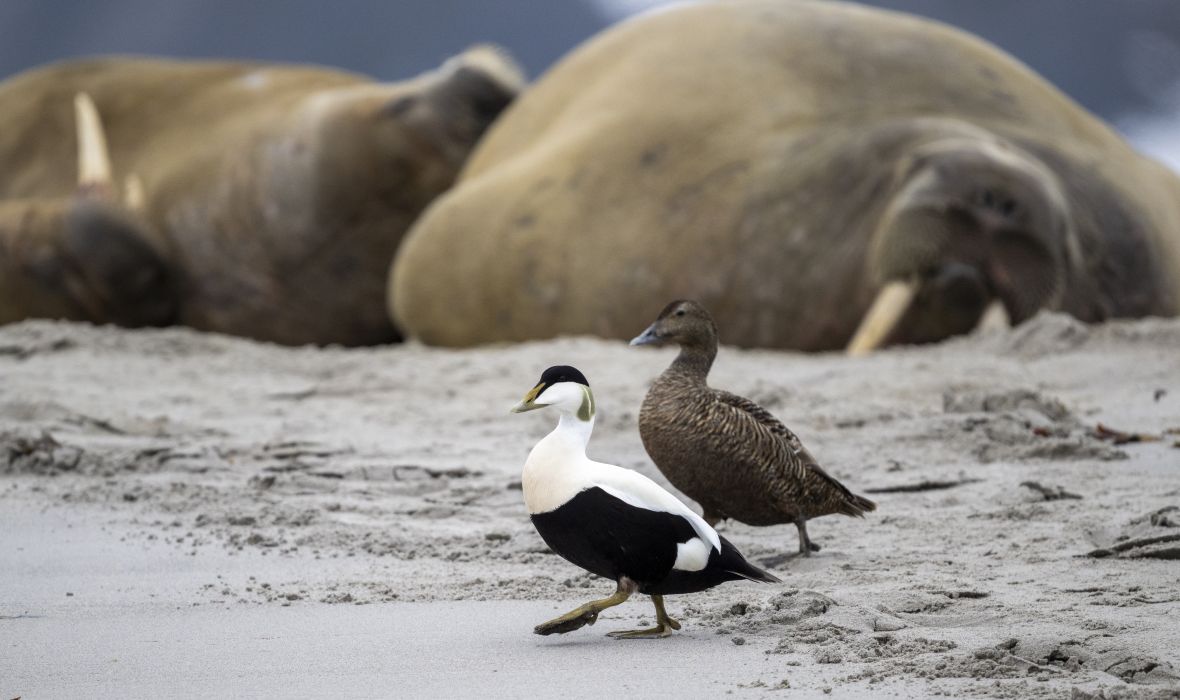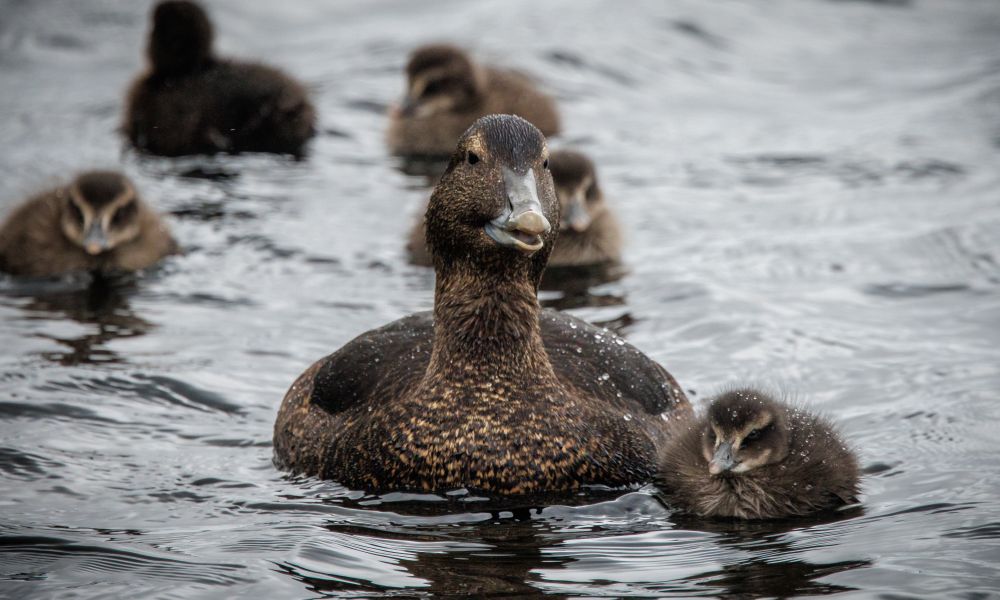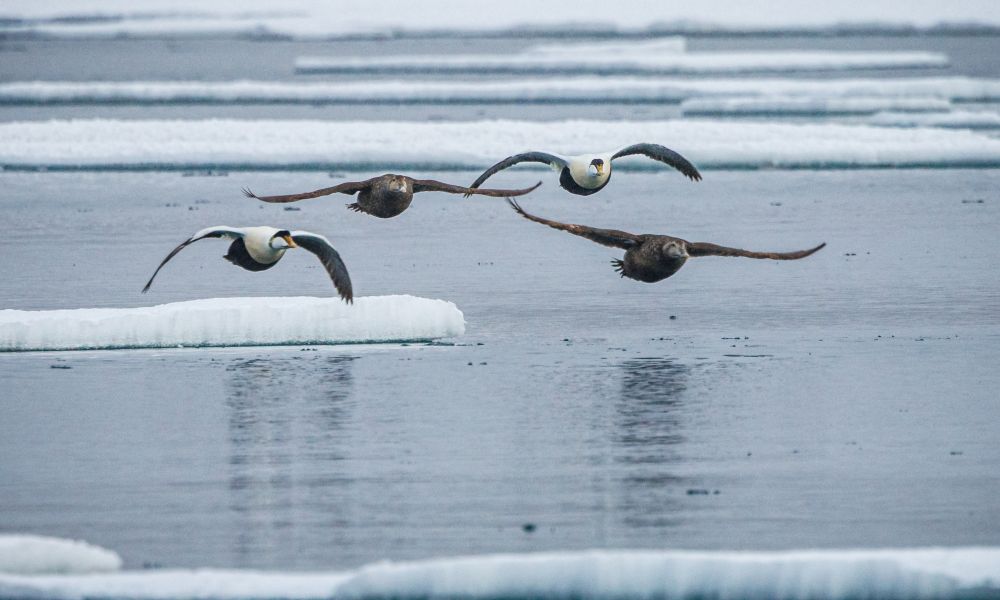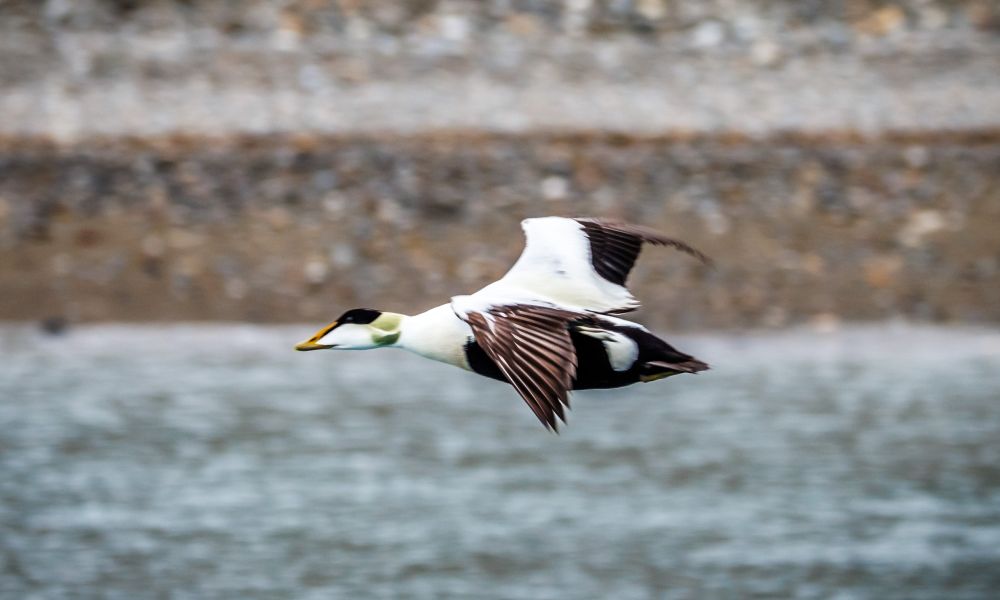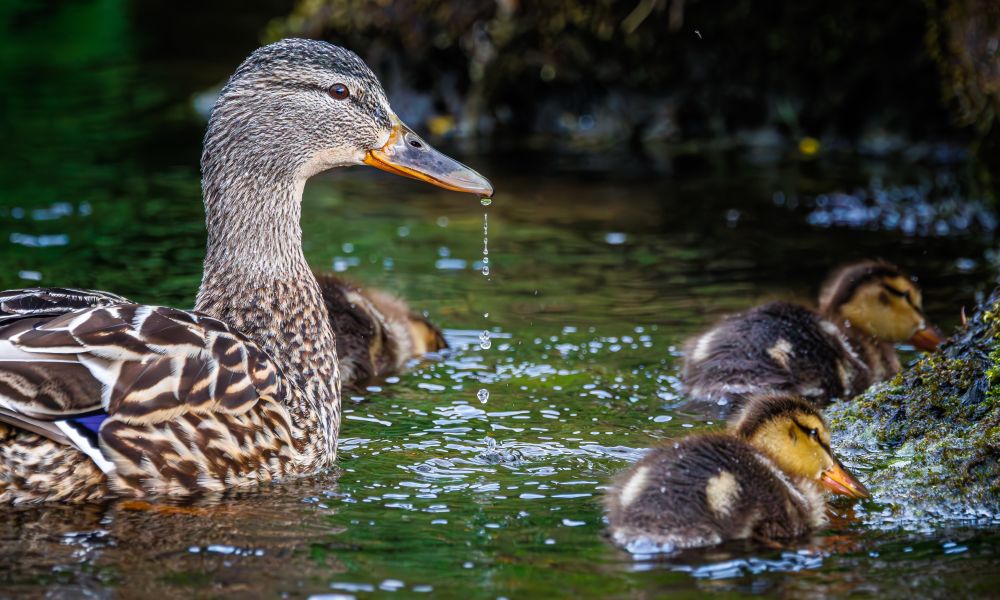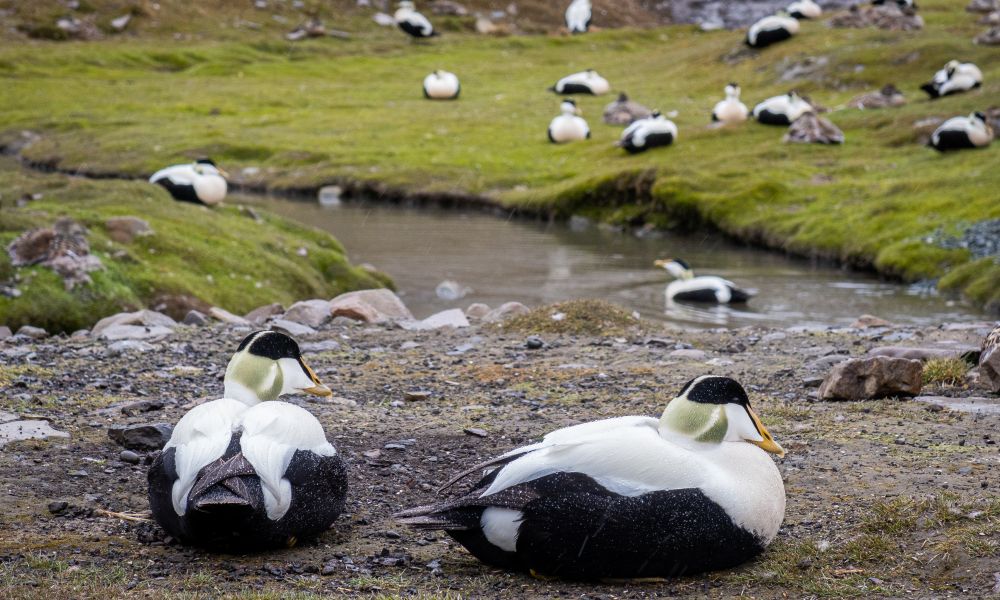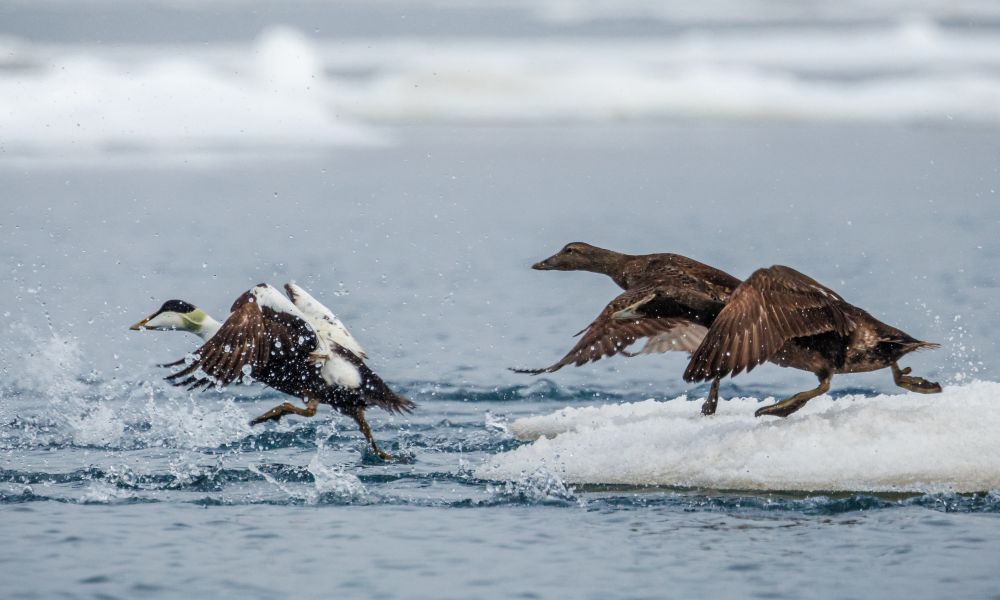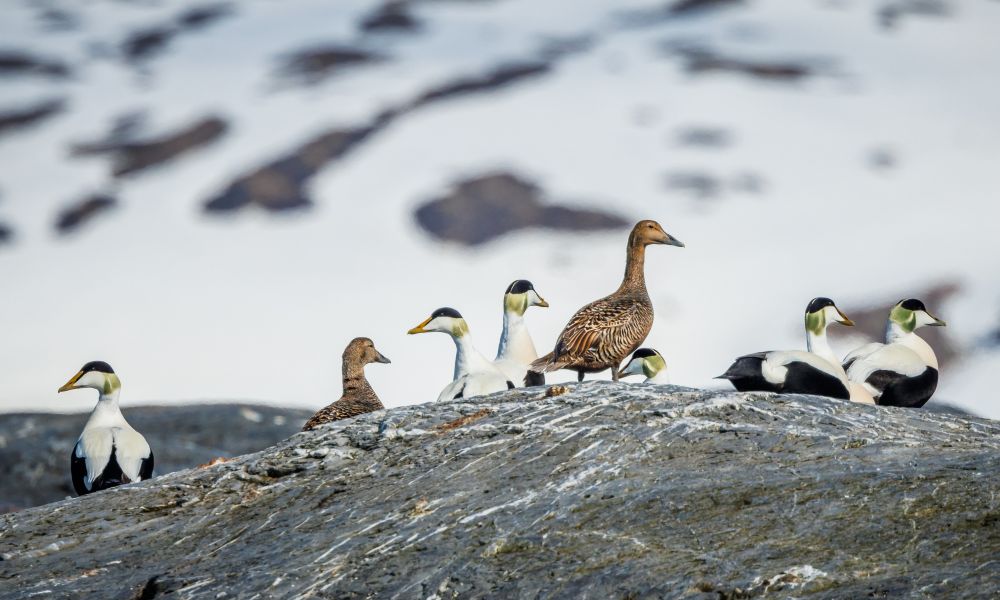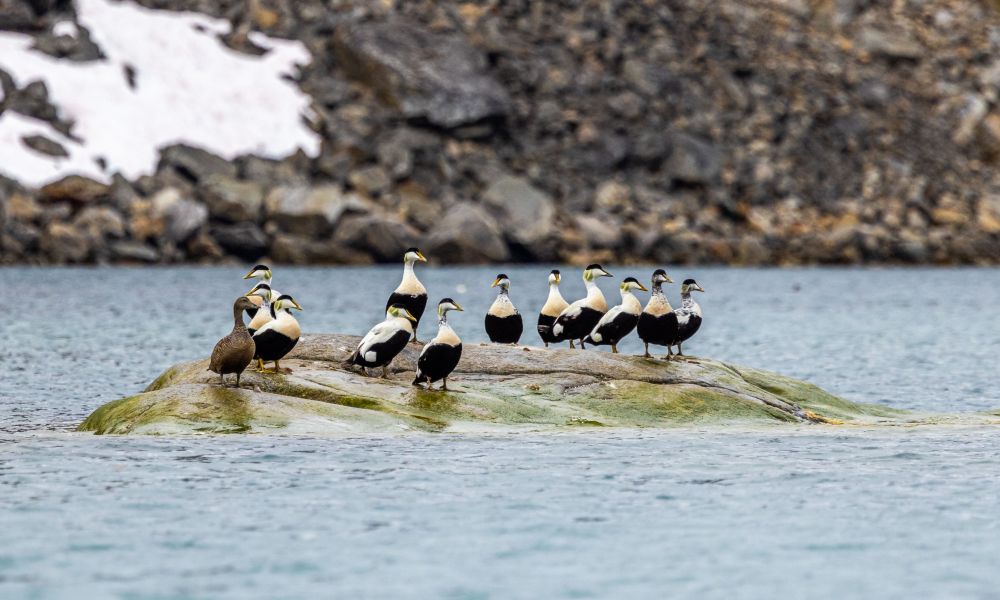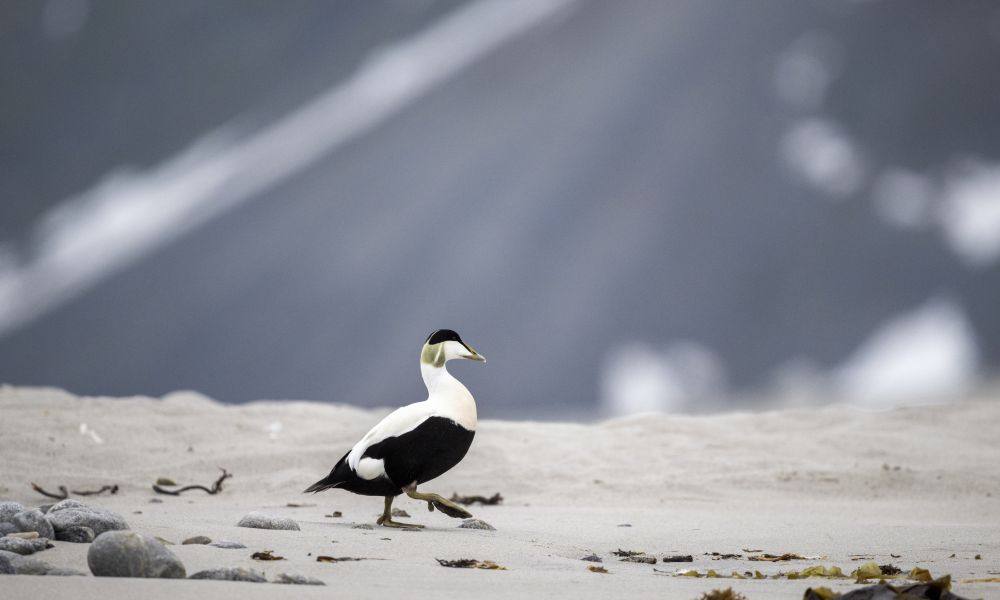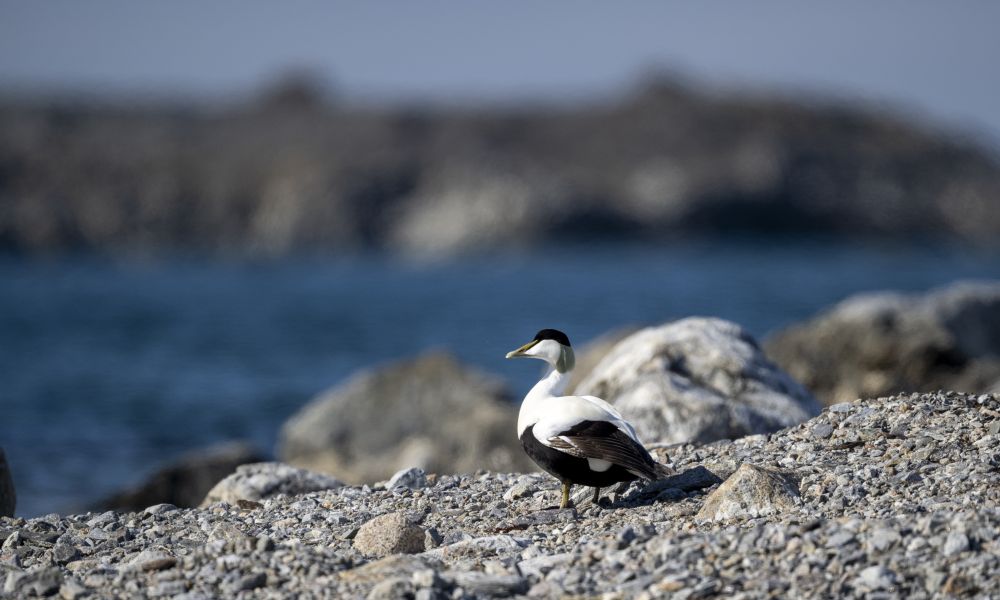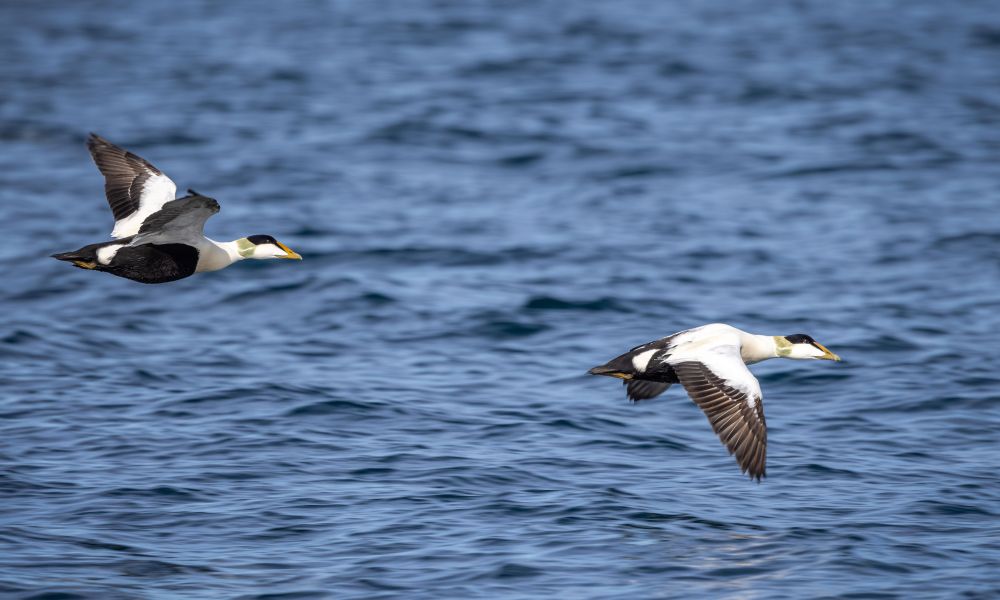Where Does the Common Eider Duck Live?
The common eider duck is widespread across the Arctic, where it consistently breeds near the coast and frequently on small islands. With Albatros Expeditions, you can see a common eider flying in destinations from Canada and Greenland to Iceland, Svalbard, and northern Europe!
What Do They Look Like?
The common eider drake (male) in summer has a black stomach, tail, and wing tips, a white back, cream-coloured breast, and a large bright green nape, while the head is white with a black cap and a yellowish-green, wedge-shaped beak. In contrast, the female is mainly brown with numerous small black spots, a narrow white wing band, and a light tip to the beak.
How Big Is a Common Eider?
Considered one of the largest ducks in the Northern Hemisphere, the male can weigh up to 3 kg (6.6 lbs) and reach a length of 71 cm (2.3 ft). Females are smaller, weighing approximately 2 kg (4.6 lbs) and measuring up to 63 cm (2.1 ft) long.
What Do They Eat?
As an expert diving duck that usually feeds on the seabed, the common eider's diet consists mainly of animals such as crustaceans, snails, and especially mussels.
What’s the Difference Between a King Eider and a Common Eider?
These are two different species of sea ducks, and the most apparent difference is the king eider's unique colourful head with an orange shield on the bill, unlike the common eider, which has a longer, wedge-shaped bill. As for similarities between the two, they have salt-excreting glands over the eyes, from which they can expel excess salt absorbed from seawater, allowing them to digest it. As a consequence, these two species are among the most well-adapted to live in a marine environment.
What Are the Main Differences Between Males and Females?
The difference between the genders is immediately noticeable in the way their plumage differs from each other. Females are brown and speckled, which is ideal for hiding while incubating the eggs. As for the male common eider, it is colourful during the breeding season, with black, white, green, and cream tones.
Are They Able To Fly?
Yes, this species is capable of flying. Their flight is swift but characterised by relatively heavy and slow wing strokes for a duck.



